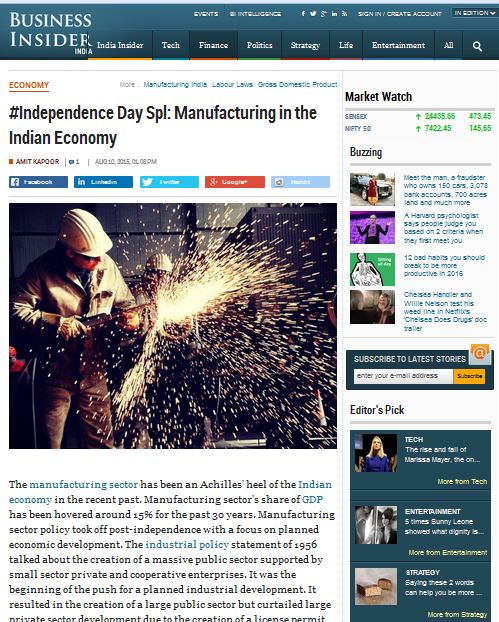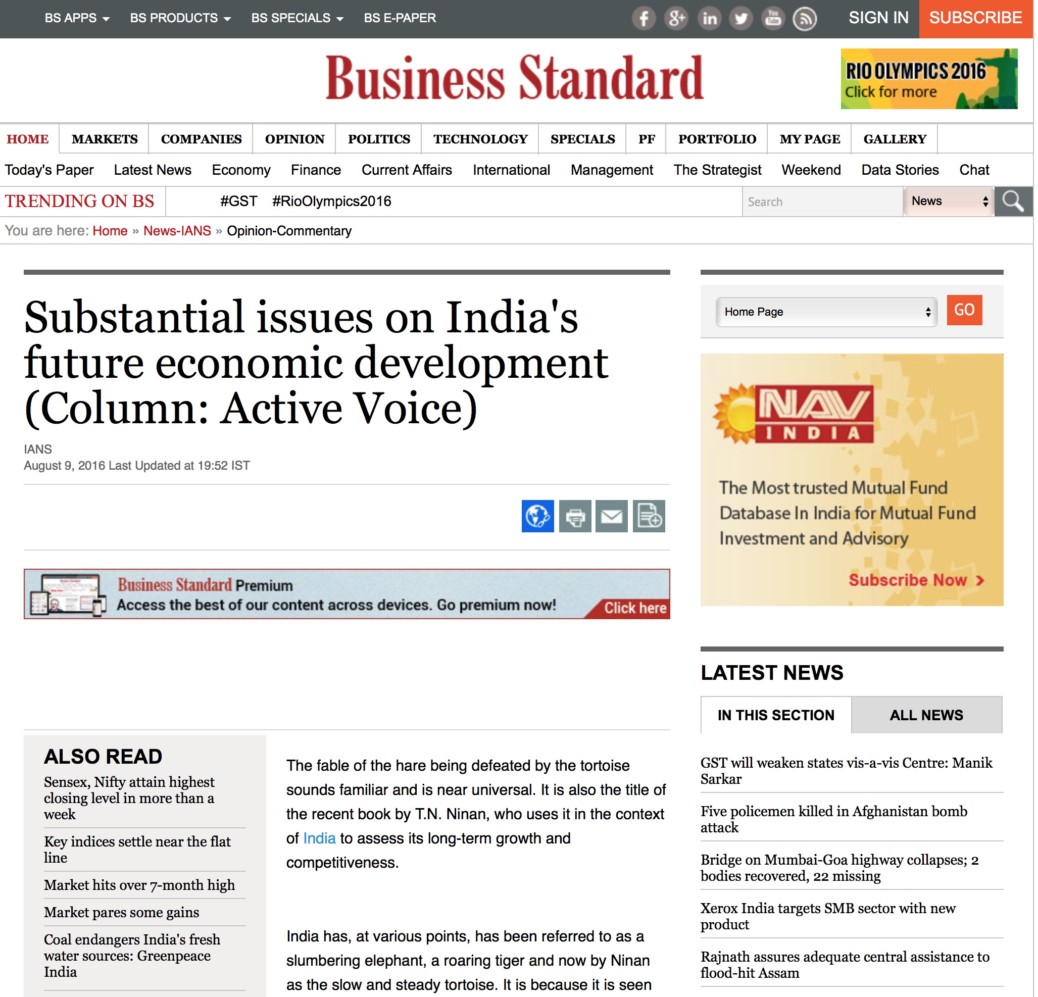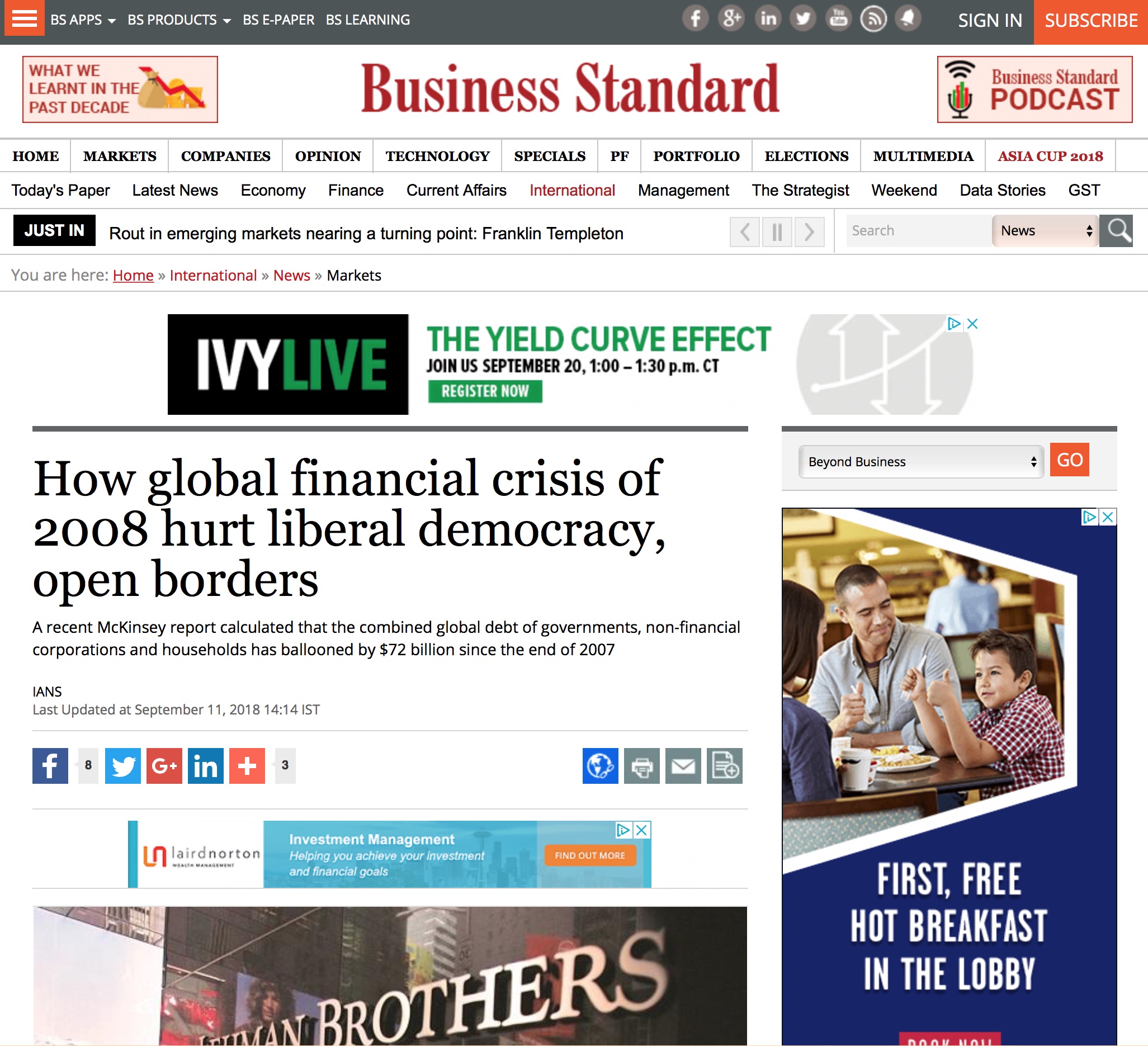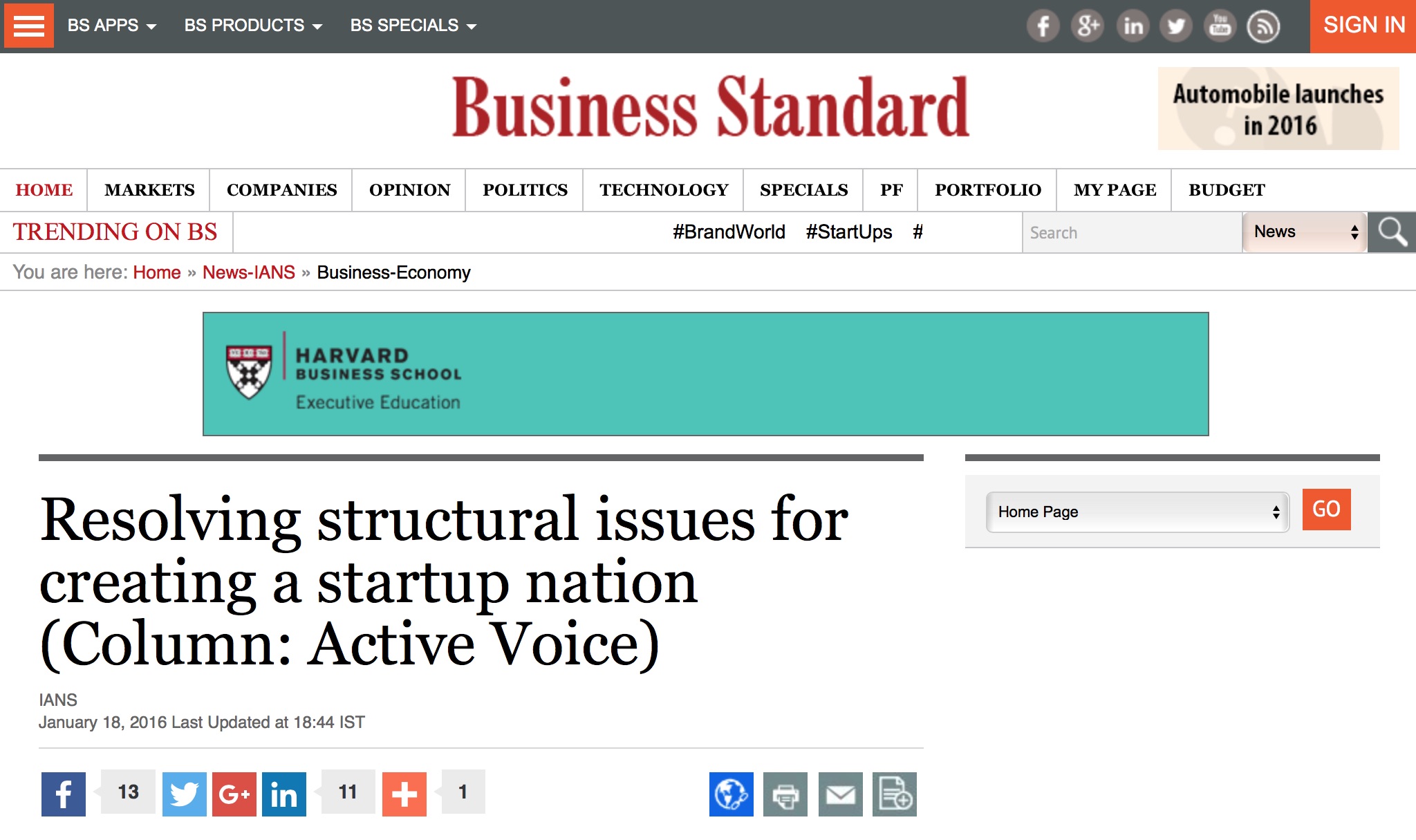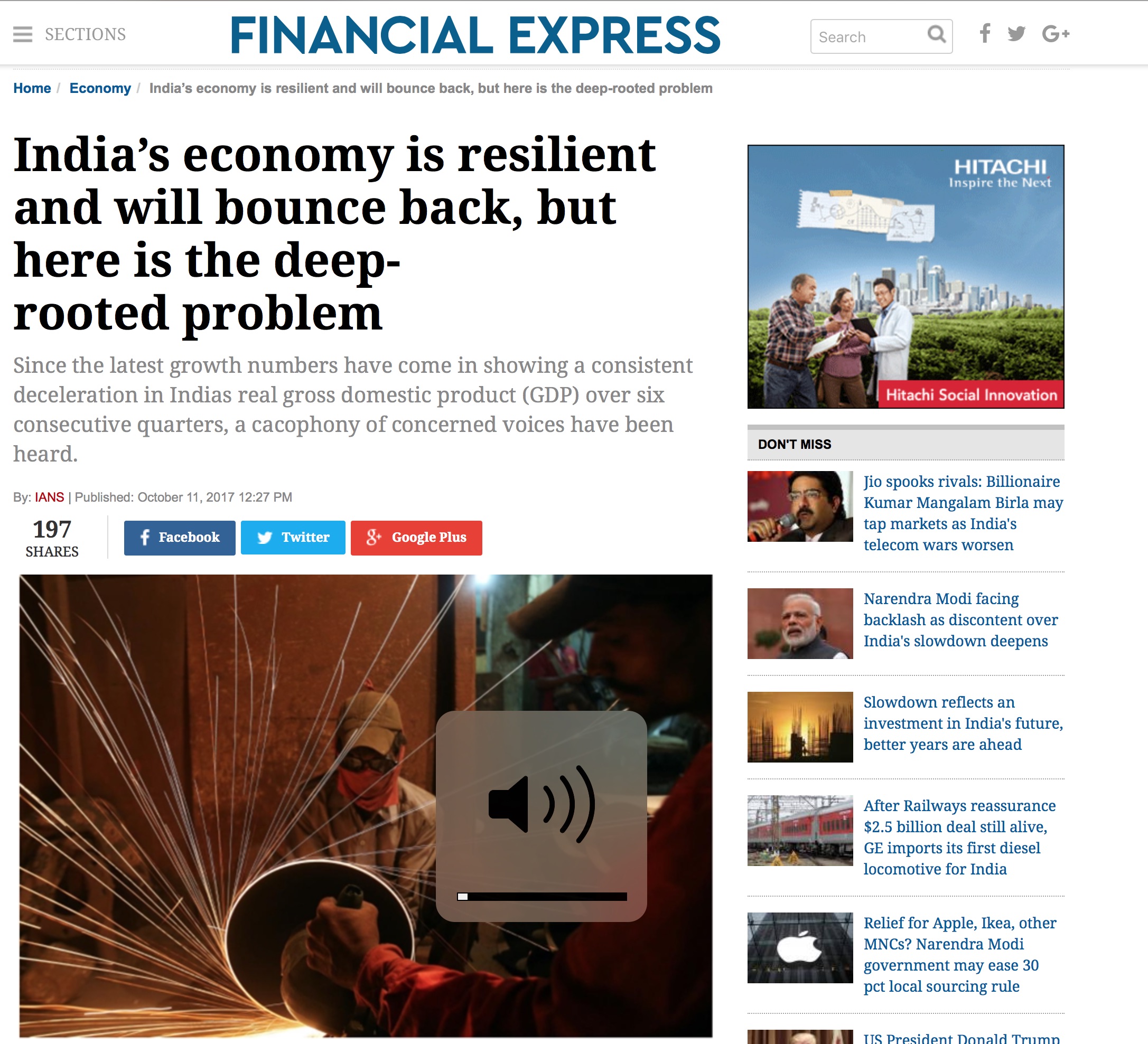By Amit Kapoor & Arman Sharma
India’s healthcare sector is one of the fastest-growing in the world. Already the world’s leader in pharmaceutical manufacturing, India’s massive talent pool and cost advantage position it to become a global leader in healthcare innovation. The question remains: exactly what part of healthcare should India double down on? Especially in the wake of the COVID-19 pandemic, everyone from common workers to industry leaders to national public health officials received a crash course in the hugely complex and diverse landscape that is healthcare. While bedside treatment is certainly a part of it (the part that most are naturally familiar with), there’s therapeutics development, diagnostics, data management, insurance, and so much more. As India rises to become one of the most important members of the global community, socially, economically, and geopolitically, a comprehensive strategy for developing a unique edge in healthcare must be defined.
Oftentimes, healthcare innovation is construed as the development of new therapeutic technologies or devices. Therapy is increasingly shifting toward a biologic-oriented model where new drug paradigms, such as CAR-T therapy, cell therapy, and gene therapy are capturing the attention of researchers, governments, and new companies worldwide. India is no exception. From 1994-2016, Indian researchers pursued the development of hundreds of compounds (most of which were licensed to and later shelved by United States-based pharmaceutical companies). India’s recent National Research Foundation (NRF) bill, which represents a monumental shift to prioritizing and accelerating fundamental R&D, explicitly highlights the importance of developing new therapeutics. While India contributes minimally to the development of new therapeutics globally, as per McKinsey & Company insights, the United States of America (USA) is responsible for 78% and European countries are responsible for 13%. The success of the USA and Europe in developing new therapeutics is due to the research environment they have cultivated over decades. The USA spends 3.4% of its GDP on fundamental R&D, whereas India’s expenditure stands at 0.64% and is declining. Additionally, 9-10% of USA undergraduates pursue PhDs, a percentage notably higher than the 0.4% of Indian undergraduates. A peer-review-driven, sustainably funded, aligned-incentives research environment in the USA and Europe has driven their dominance in therapeutics innovation. However, India’s recent push to implement best practices like peer review in grant approval and escalation of funding is an encouraging step. India has a considerable journey ahead to match the innovation prowess of the USA or Europe in the field of therapeutics.
India should be looking at those areas where the USA and Europe come up short. While the USA and Europe stand at the forefront of innovation in developing groundbreaking therapeutics and medical advancements, both regions, broadly speaking, persistently struggle in the cost-effective delivery of healthcare. Despite having the best treatments available to some, the challenge lies in ensuring equitable access and affordability for all patients. High and rising costs of basic products and services, complex reimbursement systems, fragmented care delivery models, and antiquated data and protocol management processes are among the factors contributing to inefficiencies in these regions.
These challenges are not solved by fundamental technological innovations (like a new gene therapy for congenital heart disease). They’re solved by process innovation: the novel combination and/or application of existing technologies, which is exactly what India needs to focus on for healthcare. As the world’s pharmacy, India has already created that niche for itself. The world turns to India for generic pharmaceuticals because of its ability to manufacture an impressively diverse array of generics at an unmatched cost and scale. The factors that allow this to happen, a large talent pool, decades of government support for manufacturing, and a flexible regulatory environment, are conducive to process innovation in many other sectors beyond pharmaceuticals, but most importantly, in care delivery.
The greatest challenge in healthcare is always last-mile delivery. Developing a new therapy is difficult, but it can largely be done within a single entity. Delivering high-quality treatment at scale requires an extreme degree of operational excellence and coordination between independently acting stakeholders in the care delivery pipeline, including developers, insurers, providers, provider systems, and of course, patients. The unprecedented speed with which India adopts new technologies for healthcare, as evidenced by the Ayushman Bharat Digital Mission (the largest national program for digital health in the world) and some of the highest rates of adoption for digital health during the pandemic, puts it on a path to solve many of the Electronic Medical Record and remote care problems that are particularly pressing in the USA. The explicit prioritization and substantial support from the central government in providing last-mile delivery to every Indian via the Ayushman Bharat scheme creates a paradigm of grand challenges; innovators and corporations are incentivized to work directly on care delivery problems. Perhaps most importantly, India’s unparalleled diversity of healthcare needs—triple-bypass surgeries in major metropolitan hospitals and basic malaria prevention in the rural heartland—gives it a unique perspective on healthcare delivery that is relevant not only domestically, but also globally. Facing such a wide range of challenges, India is well-positioned to design processes and systems that take everyone’s health into account.
The US shows us what healthcare is: complex, expensive, and bureaucratic. India can show the world what healthcare could be. The government, capital allocators, industry leaders, and most importantly, ground-level innovators must direct their healthcare efforts to solidify this niche, which is critical to making India a true Vishwaguru in healthcare.
(Amit Kapoor is chair, Institute for Competitiveness and lecturer, USATMC, Stanford. Arman is an student of Dr. Kapoor’s at Stanford).
The article was published with Business World on February 17, 2024.

